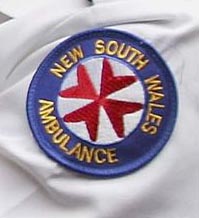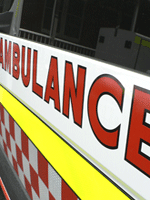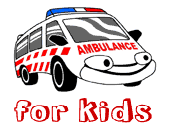This website has been developed with funding by The Asthma Foundations of Australia through their Asthma Targeted Intervention Grant program. Previous research, conducted in 2003 and 2005 by Monash University Department of Community Emergency Health and Paramedic Practice (funded by the Department of Health; Asthma Subsection), identified several barriers to optimal emergency prehospital asthma care in rural Victoria and South Australia (1, 2).
Those barriers were:

- A poor understanding of the ability of ambulance paramedics to treat asthma effectively.
- A lack of trust in the rural and remote area numbering system.
- Perceived poor response times by ambulances.
- Concerns about city based 000 call centres not able to accurately direct ambulances to country properties.
- A lack of understanding about the unpredictable nature of acute asthma and how quickly people with asthma can deteriorate.
- The belief that asthma is not a serious health risk and ambulances should be preserved for “heart attack and traffic accidents.
- An inadequate provision and understanding of written, individualized Asthma Action Plans
During the study period, a number of acutely ill rural/remote area patients were transported to hospital by private vehicles and a significant number of these patients deteriorated on the way. In contrast, of all the people with asthma transported by ambulance paramedics during the study period not one person deteriorated or failed to improve (3). In 1989, 964 Australians died from asthma. By 1998 this figure had fallen to 685, a drop of 30% (4). By 2003, asthma deaths had continued to fall to 314 (5), however asthma was registered 934 times as an associated cause of death (6). This highlights that asthma continues to have a significant impact on the health of Australians. There are also inequalities in the outcomes of asthma amongst some Australians. Older adults, people with asthma living in rural/remote areas and Aboriginal and Torres Strait Islanders are examples of populations at increased risk of asthma associated morbidity and mortality (7, 8). It is estimated that 60 per cent of asthma deaths are associated with avoidable factors such as over-reliance on reliever medications, delay in seeking help, a failure to recognize the severity of asthma and lack of regular medical review (9). This project is intended to address one of the more at risk populations, those people with asthma who live in rural and remote areas, and provide them with decision aids to encourage them to seek medical intervention for asthma earlier. It is hoped that you will refer your patients to this site and consider each individuals physical, psycho-social and geographical circumstances when developing a written asthma action plan with them.
References

- Morgans A, Sheen L, Archer F. Replication of previous study to inform national picture of asthma and ambulance use in rural areas. Melbourne: Monash University Centre for Ambulance and Paramedic Studies (now Monash University Department of Community Emergency Health and Paramedic Practice); 2005.
- Cooper A, Archer F. Barriers to Optimal Emergency Management of Asthma in Rural Victoria. Melbourne: Monash University Centre for Ambulance and Paramedic Studies; 2003.
- Morgans A, Archer F, Walker T, Thuma E. Barriers to accessing ambulance services in rural Victoria for acute asthma: Patients’ and medical professionals’ perspectives. Australian Journal of Rural Health 2005;13:116-120.
- AIHW Australian Centre for Asthma Monitoring 2005. Asthma in Australia 2005. AIHW Asthma Series 2. AIHW cat. no. ACM 6.Canberra: AIHW
- Australia NAC. Asthma Death Toll Steadies. In. Melbourne: National Asthma Council Australia; 2006.
- Australian Institute of Health and Welfare 2005. Chronic respiratory diseases in Australia: their prevalence, consequences and prevention. AIHW Cat. No. PHE 63 Canberra: AIHW.
- Australian Institute of Health and Welfare; 1998.AIHW Cat No. PHE 6. Health in Rural and Remote Australia. Canberra: AIHW
- Marks G, Correll PK, Williamson M. Asthma in Australia 2005. eMJA 2005;183(9):445-446.
- Jenkins C. Asthma - Expert View. In. Melbourne: Department of Health and Ageing; 2006. available at: www.healthinsite.gov.au Accessed on: 18.09.06
 |
